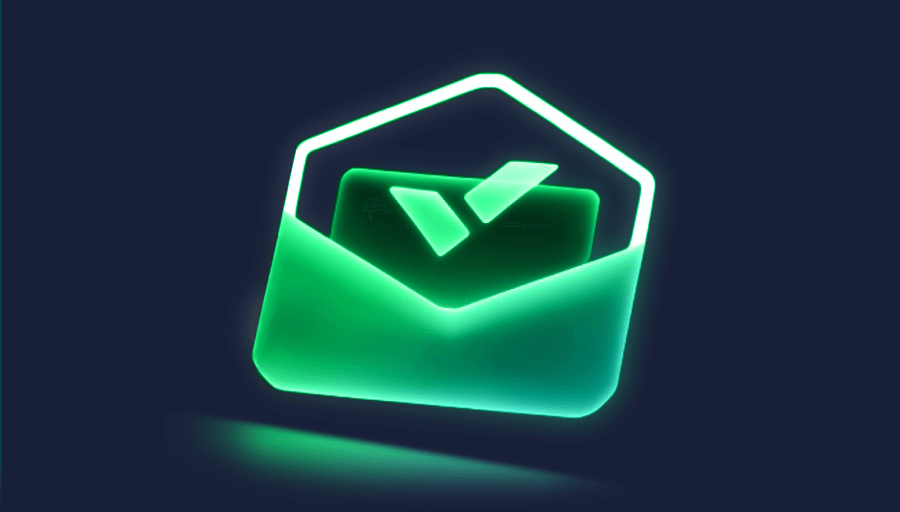Key takeaways:
- What is risk management? It’s a systematic process of identifying, assessing, treating, and monitoring risks that could impact your business objectives.
- Why is risk management important? It enhances operational efficiency, helps avoid financial losses, ensures business continuity, and protects reputation and customer trust.
- What are the key concepts in risk management? Key concepts include risk appetite, identification, analysis, evaluation, treatment, and continuous monitoring of risks.
- How can technology aid in risk management? Technology automates risk identification, detects potential issues quickly, and utilizes AI/ML for predictive analytics, enhancing overall risk management efficiency.
- How can Wrike help build a risk management framework? Wrike streamlines risk management tasks, provides customizable templates, and offers analytics tools for continuous monitoring and effective communication.
You might wonder, “What’s all the fuss about risk management?” Well, risk management has become an integral part of organizational success. Any business that relies heavily on technology must learn how to manage risks effectively. Risk management means figuring out what could go wrong, planning how to handle it, and ensuring your IT systems can keep running smoothly, even when things get bumpy.
So, why is this important for you? Imagine you’re running an IT department. Every day, you deal with data, software updates, and the constant threat of cyberattacks. A robust risk management framework helps you identify these threats early, decide which ones are most critical, and plan how to deal with them effectively.
In this article, we will demystify the essential elements of a robust risk management framework, exploring the key concepts, the role of technology, and case studies of successful frameworks. We will also show you practical ways to build a robust risk management framework with Wrike and how our features can be integrated into your framework.
Build a robust risk management framework in Wrike — start your free trial now.
What is risk management?
Risk management is a systematic process that involves identifying, assessing, treating, and monitoring risks. Deloitte’s 2023 risk management survey explains the different risk domains that organizations are focusing on. 62% of firms are focused on cyber and information security risks, while 33% are focused on geopolitical risks. Resilience and business continuity risks closely followed these, with 32% of firms paying more attention to them, while 29% of firms are focusing more on data privacy risks. Organizations are better prepared to navigate uncertain situations and make informed decisions by proactively addressing these potential risks.
The importance of risk management in business
Risk management is not just a buzzword. In fact, there are a lot of benefits to creating an effective risk management framework. For example, it can help you to:
- Identify potential issues before they escalate into actual problems
- Address risks in a structured manner to improve operational efficiency
- Avoid the financial losses associated with IT failures, such as system repairs, data recovery, and business loss during downtimes
- Withstand and recover from IT infrastructure disruptions, maintaining business continuity
- Safeguard your company’s reputation by minimizing the impact of adverse events and allowing for appropriate responses
- Stay prepared to protect customer data and maintain trust
- Stay compliant and avoid legal consequences associated with breaches
- Make informed decisions about where to allocate resources and how to prioritize IT projects
Key concepts in risk management
OK, so we know why we need risk management. But what are the main concepts behind risk management? There are six to keep in mind:
- Risk appetite: An organization’s willingness to take on risk to pursue its objectives. It defines the level of risk that the company considers acceptable and aligns it with its overall strategy.
- Risk identification: The first step in the risk management process. It involves flagging internal and external factors that may hinder the achievement of business objectives.
- Risk analysis: Here, you assess the potential impact and likelihood of identified risks to prioritize risks based on their severity and likelihood of occurrence.
- Risk evaluation: Next, you evaluate the potential impact of the shortlisted risks and determine whether they can be tolerated, treated, transferred, or avoided.
- Risk treatment: After evaluation, you implement measures to mitigate, transfer, or avoid identified risks.
- Risk monitoring: Finally, this is an ongoing process that involves tracking and reviewing risk-related activities. Organizations can identify emerging threats by continuously monitoring risks and adjusting their risk management strategies accordingly.
The 3 essential elements of a risk management framework
There are three key steps to building a robust risk management framework. These include:
1. Identify and assess risks
Imagine you’re running the IT department. The first thing you’d do is look around and see what might cause problems. You’d check out your software, hardware, data handling practices, and even how your team manages daily tasks. Ask yourself:
- Are you using old servers that might fail?
- Is your sensitive data a juicy target for hackers?
- Is there a new app deployment coming up that could have bugs?
Listing these things gives you a clear picture of where things might go sideways. Once you’ve identified potential risks, the next step is to figure out how likely they are to happen and what the impact would be if they did. In this case, you use data and past experiences to make educated estimates.
- How likely is it that this risk will occur?
- Is it a rare event or something that happens often?
- If this risk becomes a reality, how bad would it be?
- Could it bring down your entire network?
- Would it be a minor inconvenience?
For example, if you’re implementing a new email system, there’s a risk it could lead to downtime. You’d ask yourself:
- How many times have our new software rollouts caused issues?
- How critical is email access for day-to-day operations?
Work automation software like Wrike can be powerful for monitoring and assessing risks. Wrike’s dashboard can be customized to display metrics related to various IT risks, such as system performance indicators or progress on IT projects. You get a constantly updated view of potential risk factors, making assessing their probability and impact easier. For instance, you can create a dashboard that shows real-time data on IT projects, so you can spot any issues that could lead to future problems.

2. Treat and mitigate risks
You’ve spotted a risk — now what? Well, you’ve got a few options. You can dodge the risk, fix the underlying issue, share it, or accept it. The choice depends on how big a threat is to your operations and what resources you have to deal with it.
Sometimes, the best way to handle a risk is to avoid it altogether. Say there’s a new software packed with cool features but it’s buggy and could threaten your data security. Avoiding the risk might mean not using that software until it’s more stable.
Wrike’s templates can help you standardize your risk treatment and mitigation processes. You can create custom templates for different types of risk responses that your IT team might need. For example, you can have a preset template for responding to various IT incidents, like security breaches or system failures. Each template can include steps for initial assessment, communication guidelines, task assignments, and follow-up actions.

3. Continuously monitor and review risks
You’re familiar with how quickly technology changes. New updates, threats, and tools are a lot to keep up with! Continuous monitoring means you’re always watching how these changes might impact your systems and processes. By constantly monitoring issues, you can catch them before they become big problems.
Maybe a minor glitch is starting to show up more often, or a piece of software isn’t playing nice with updates. Catching these early means less downtime and fewer headaches. You don’t need to be stuck at your desk 24/7 to keep an eye on things.
Wrike can be a huge help in this area. Wrike’s analytics tools can help you spot trends, measure performance against your metrics, and get detailed reports on everything that matters to your risk management. Setting up continuous monitoring with tools like Wrike puts you one step ahead and keeps your IT operations smooth and secure.

The role of technology in risk management
Technology is a game changer in risk management for several key reasons. First of all, it allows for quick detection of potential issues. With the right tools, you can monitor your network, systems, and data around the clock. By analyzing vast amounts of data, these tools can uncover hidden patterns and potential risks that may go unnoticed through manual processes.
Technology also allows organizations to automate the risk identification process, reducing the reliance on manual efforts. By eliminating manual data entry and analysis, automation reduces the likelihood of human error, such as overlooking critical information or making incorrect assessments.
Artificial intelligence (AI) and machine learning (ML) also have revolutionized risk management by enabling predictive and prescriptive analytics. These advanced technologies can analyze historical data, identify trends, and forecast potential risks. They can also help organizations optimize risk treatment strategies by recommending the most effective approaches based on historical performance and real-time data.

Case studies: Successful risk management frameworks in action
Real-world case studies illustrate the effectiveness of robust risk management frameworks in diverse industries. Let’s take a look at two examples.
Case study 1: Risk management in finance
Banks and other financial institutions have developed sophisticated risk management frameworks to maintain compliance and stability. These frameworks involve comprehensive risk identification processes, stress testing, and scenario analyses to assess potential risks. Risk treatment strategies in finance may include:
- Portfolio diversification
- Hedging strategies
- Rigorous compliance and control measures
Case study 2: Risk management in healthcare
Hospitals and healthcare organizations use risk management practices to identify potential threats, implement effective treatment strategies, and avoid medical errors. Healthcare risk management frameworks encompass various aspects to mitigate risks, including:
- Patient safety initiatives
- Compliance with healthcare regulations
- Effective communication channels
These frameworks help preserve patient trust and enhance organizational resilience.
How to build a robust risk management framework in Wrike
To establish a robust risk management framework tailored to your organization’s needs, you need Wrike. All you need to do is follow these key steps:
- Set up a Wrike project to create your risk management policy.
- Create a master template for risk documentation that includes sections for defining risk appetite and identifying potential risks.
- Create a dedicated folder for risk management and set up tasks for each step, such as data collection, risk analysis, and evaluation.
- Schedule and track the timelines of your risk mitigation plans with a Gantt chart
- Manage and allocate resources effectively across risk management activities with workload charts.
- Outline the steps to mitigate the risk in Table view, assign tasks to team members, and set deadlines.
- Use the time tracker to measure the time spent on risk management activities.
- View dashboards to monitor the effectiveness of your risk mitigation efforts.
- Schedule regular reviews of your risk management framework with our Zoom integration.
Ricardo da Palma Borges, Managing Partner at RPBA, a tax law firm, says:
“Wrike changed our daily work by providing us with tools for effective project control and risk reduction. This boosts confidence in our performance and diminishes concerns of failure.”
Ready to create your risk management framework with Wrike? Sign up for a free trial and experience the power of work management software.
Note: This article was created with the assistance of an AI engine. It has been reviewed and revised by our team of experts to ensure accuracy and quality.








